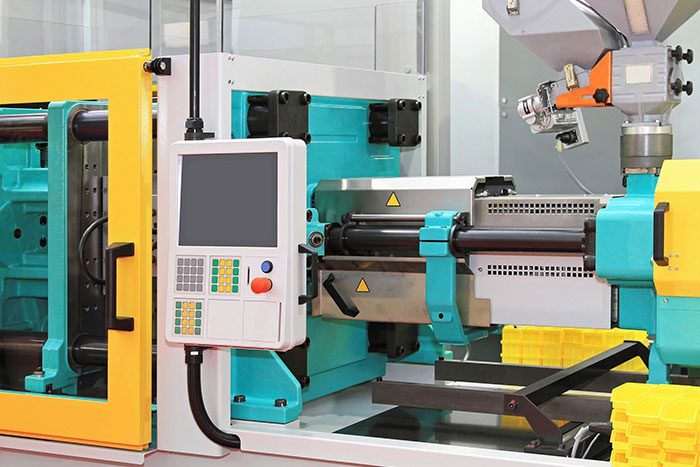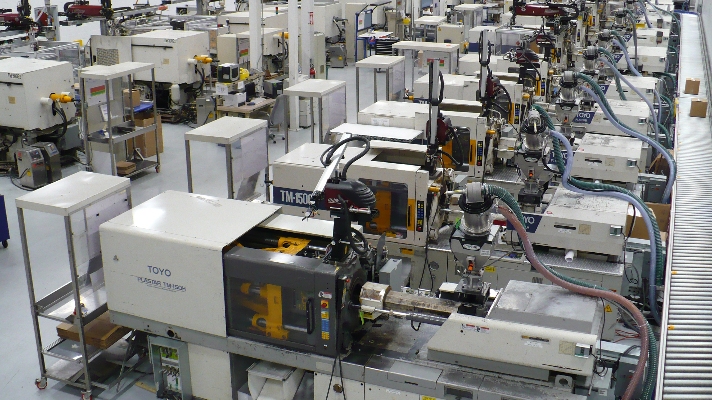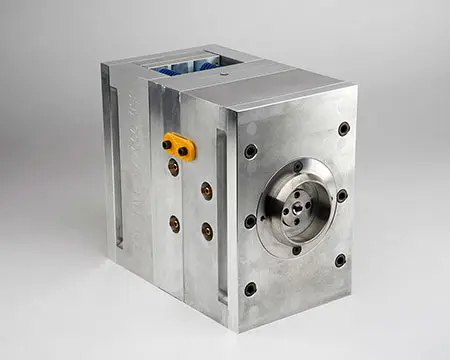Enhancing Product Advancement with Advanced Plastic Injection Molding Solutions
Enhancing Product Advancement with Advanced Plastic Injection Molding Solutions
Blog Article
Recognizing the Fundamentals of Plastic Shot Molding Procedures
Plastic injection molding offers as a foundation of contemporary manufacturing, giving a systematic method to producing intricate parts with precision. Exploring these essential components might reveal just how even minor adjustments can lead to substantial enhancements in production end results, elevating concerns about the possibility for advancement in this well established procedure.
What Is Plastic Injection Molding?
Plastic shot molding is a commonly utilized manufacturing process that changes thermosetting and thermoplastic products into exact and complex forms. This strategy is favored for its capacity to produce high volumes of the same components with phenomenal accuracy, making it a crucial method in different sectors, consisting of automobile, customer items, and medical devices.
The process entails thawing the chosen plastic material and injecting it into a mold and mildew under high stress. The mold and mildew, designed to the specs of the preferred component, permits the liquified plastic to form as it cools and solidifies. When the product has actually solidified, the mold and mildew is opened up, and the ended up component is ejected.
Plastic injection molding offers several advantages, including minimized waste, uniformity in production, and the capability to integrate elaborate layouts that may be challenging with other manufacturing methods. Furthermore, it sustains a broad series of products, each supplying one-of-a-kind residential properties that can be customized for certain applications. As markets proceed to innovate, plastic injection molding remains at the forefront, making it possible for the growth of innovative items that satisfy evolving consumer needs.
The Shot Molding Process
The injection molding procedure is an innovative strategy that includes a number of essential stages to generate high-grade plastic parts. At first, plastic pellets are fed into a heated barrel where they are thawed right into a viscous fluid. This molten plastic is after that infused under high pressure right into a precision-engineered mold and mildew, which shapes the product into the desired kind.
When the mold is filled, the plastic is permitted to solidify and cool, taking the shape of the mold cavity. Cooling time is crucial, as it influences the cycle time and the final homes of the molded component. After sufficient air conditioning, the mold opens up, and the finished part is ejected making use of ejector pins.

Products Used in Shot Molding
Numerous products can be made use of in the injection molding process, each offering special buildings that accommodate particular applications. The most generally used products consist of thermoplastics, thermosetting plastics, and elastomers.

Thermosetting plastics, like epoxy and phenolic resins, go through a chemical modification throughout the treating process, leading to a rigid, inflexible structure. These products are ideal for applications requiring high warm resistance and architectural honesty, usually utilized in auto components and electrical insulators.
Elastomers, including silicone and rubber-based products, offer versatility and strength. Their one-of-a-kind residential or commercial properties make them ideal for applications go to my blog that demand elasticity, such as gaskets and seals.
Additionally, specialty products like bio-based plastics and composites are gaining traction for their ecological benefits and boosted performance features, widening the range of injection molding applications in different industries. Comprehending the properties of these products is critical for selecting the suitable kind for specific jobs.
Advantages of Shot Molding
Shot molding attracts attention as a very effective production procedure that offers numerous benefits for creating intricate components with accuracy. One of one of the most substantial benefits is the ability to create intricate layouts that would certainly be difficult or impossible to achieve with other approaches (Plastic Injection Molding). The process enables thorough attributes and limited tolerances, making certain high-grade elements
In addition, injection molding is recognized for its quick production abilities, making it an excellent selection for high-volume production. Once the mold is created, components can be produced swiftly, lowering preparations and boosting overall productivity. This effectiveness not just reduces production prices but also gives an one-upmanship in the market.
The flexibility of materials made use of in shot molding additionally enhances its allure. A wide variety of thermoplastics and thermosetting polymers can be employed, enabling producers to pick materials that ideal meet their specific demands, consisting of toughness, warm, and versatility resistance.
Furthermore, the procedure decreases waste, as excess material can typically be reused and recycled. This sustainability her comment is here facet contributes to a decreased ecological influence, making shot molding a responsible manufacturing option. In general, the benefits of shot molding make it a favored technique for many sectors.
Elements Impacting Product Quality
While many factors can affect item top quality in shot molding, recognizing these elements is essential for achieving ideal results. Key aspects include material option, refining criteria, and mold and mildew style.
Material choice plays an important role, as different polymers show one-of-a-kind residential or commercial properties that affect flowability, strength, and thermal stability. Poor product option can result in problems such as warping or insufficient dental filling.
Processing parameters, consisting of cycle, stress, and temperature time, need to be carefully controlled. Variants in these settings can result in inconsistencies partly dimensions and surface finish. For example, excessively high temperatures might cause degradation of the polymer, while poor pressure can cause short shots.
Mold and mildew style is equally crucial, as it identifies the circulation of the molten plastic and the cooling process. Poorly created molds might result in irregular cooling prices, resulting in recurring tensions and dimensional errors.

Final Thought
In final thought, plastic injection molding serves as a crucial manufacturing procedure that makes it possible for the reliable manufacturing of premium elements. Proficiency of the injection molding procedure, consisting of the understanding of materials and the impact of various elements on product quality, is essential for achieving optimum outcomes. The advantages of this method, such as cost-effectiveness and layout adaptability, additional highlight its significance throughout numerous markets, solidifying its standing as a favored choice for high-volume manufacturing.
Plastic shot molding serves as a keystone of contemporary manufacturing, giving a systematic approach to generating complicated components with accuracy.Plastic injection molding supplies a number of advantages, consisting of reduced waste, uniformity in production, and the capacity to integrate intricate styles that may be testing with other producing approaches (Plastic Injection Molding). As industries proceed to innovate, plastic shot molding remains at the check my blog center, enabling the growth of advanced items that meet progressing consumer demands
The shot molding process is an advanced technique that includes numerous key phases to create high-grade plastic elements.In verdict, plastic injection molding offers as a crucial production process that enables the reliable production of top notch parts.
Report this page